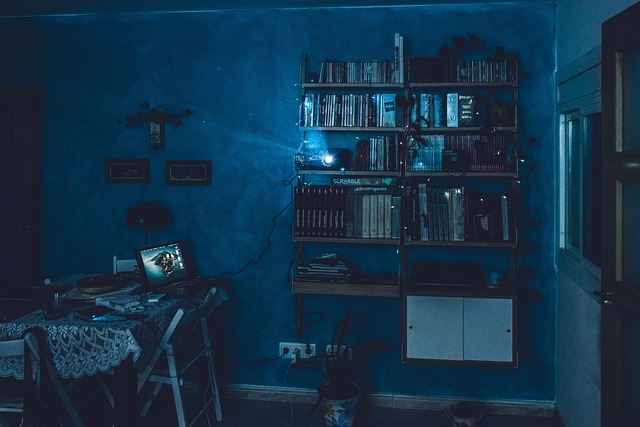Curating Whimsical Wunderkammers: The Art of Modern Cabinet of Curiosities
In a world where minimalism has long reigned supreme, a delightful counter-trend is emerging: the modern wunderkammer, or cabinet of curiosities. This enchanting blend of history, art, and personal storytelling is capturing the hearts of design enthusiasts and novice decorators alike. Join us as we delve into the fascinating world of curated curiosities, exploring how this centuries-old concept is being reimagined for contemporary homes.

A Journey Through Time: The Origins of Wunderkammers
Wunderkammers, which translates to wonder chambers in German, originated in the 16th century among European nobility and wealthy merchants. These elaborate collections served as precursors to modern museums, showcasing rare artifacts, natural wonders, and scientific oddities from around the world. Renaissance-era wunderkammers were often housed in ornate cabinets or entire rooms, reflecting the owner’s wealth, knowledge, and worldliness.
As time progressed, the concept of wunderkammers evolved. The Age of Enlightenment saw these collections become more systematized, forming the basis for natural history museums and scientific institutions. However, the spirit of wonder and curiosity that defined the original cabinets of curiosities never truly faded, lying dormant until its recent revival in contemporary design.
The Modern Wunderkammer: A Celebration of Individuality
Today’s wunderkammers are less about showcasing wealth and more about expressing personal interests and experiences. Modern interpretations range from carefully curated shelving units to entire rooms dedicated to collections of fascinating objects. The key difference lies in the democratization of the concept – anyone can create their own cabinet of curiosities, regardless of social status or budget.
Contemporary wunderkammers often feature a mix of natural specimens, vintage finds, travel souvenirs, and artisanal crafts. The emphasis is on creating a visually striking and emotionally resonant display that tells a story about its curator. This approach to decor allows homeowners to infuse their living spaces with personality and create focal points that spark conversation and intrigue.
Curating Your Own Cabinet of Curiosities
Creating a modern wunderkammer is an exercise in creativity and self-expression. Begin by identifying themes or categories that resonate with you – perhaps a collection of seashells from your travels, vintage scientific instruments, or handcrafted objects from different cultures. The key is to choose items that hold personal significance or aesthetic appeal.
When arranging your display, consider the principles of balance and contrast. Pair large items with smaller ones, and vary textures and colors to create visual interest. Grouping objects by theme or color can create a cohesive look, while juxtaposing disparate items can produce an intriguing, eclectic effect.
Lighting plays a crucial role in showcasing your collection. Consider incorporating spot lighting or LED strips to highlight specific pieces and create depth within your display. Glass-fronted cabinets or open shelving units are ideal for protecting delicate items while keeping them visible.
The Psychology of Collecting: Why Wunderkammers Resonate
The appeal of wunderkammers goes beyond mere aesthetics. Psychologists suggest that collecting and curating objects can provide a sense of control and accomplishment in an often chaotic world. Creating a cabinet of curiosities allows individuals to order their experiences and memories in a tangible, visually pleasing way.
Moreover, these displays serve as conversation starters, enabling homeowners to share their stories and passions with guests. In an age of digital overload, physical objects that can be touched and examined offer a refreshing tactile experience, grounding us in the material world.
Sustainable Aspects of Modern Wunderkammers
One of the most appealing aspects of the modern wunderkammer trend is its alignment with sustainable living practices. By encouraging the collection and display of pre-owned, natural, or handcrafted items, this design approach promotes a move away from disposable decor and fast furniture.
Thrifting, antique shopping, and supporting local artisans become integral parts of curating a wunderkammer, fostering a more mindful approach to home decoration. This shift not only reduces environmental impact but also results in more unique, character-filled spaces that truly reflect their inhabitants.
Incorporating Wunderkammers in Various Design Styles
While the eclectic nature of wunderkammers might seem at odds with more structured design styles, skilled interior designers are finding ways to incorporate elements of curiosity cabinets into various aesthetic approaches.
In minimalist spaces, a single, carefully curated shelf can serve as a focal point, adding depth and personality without overwhelming the clean lines. For maximalist interiors, entire walls or rooms can be transformed into immersive wunderkammers, creating a rich tapestry of objects and stories.
Even in traditional or modern settings, the addition of a curiosity cabinet can inject a sense of whimsy and personal history. The key is to balance the display with the overall design scheme, ensuring that it enhances rather than clashes with the existing decor.
The Future of Wunderkammers: Digital Integration and Beyond
As technology continues to shape our living spaces, we’re seeing interesting developments in the world of wunderkammers. Some enthusiasts are incorporating digital elements into their displays, such as small screens showing rotating collections of digital art or holographic projections that bring static objects to life.
Augmented reality (AR) applications are also being developed to enhance the experience of viewing cabinets of curiosities. Imagine pointing your smartphone at an object in your wunderkammer and instantly accessing information about its history, origin, or significance.
These technological advancements don’t detract from the tactile, analog nature of traditional wunderkammers. Instead, they offer new ways to engage with and learn about the objects we collect, bridging the gap between physical and digital realms.
In conclusion, the resurgence of wunderkammers in modern interior design offers a delightful counterpoint to prevailing minimalist trends. By encouraging personal expression, storytelling, and a more sustainable approach to decor, this centuries-old concept has found new relevance in contemporary homes. Whether you’re drawn to the nostalgia of vintage curiosities or the wonder of natural specimens, creating your own cabinet of curiosities can transform your living space into a deeply personal, endlessly fascinating sanctuary.





